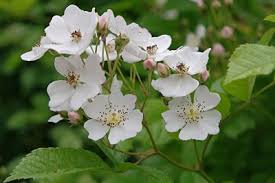
Rosa cymosa, with its myriad of benefits and applications, requires careful handling during harvesting and preservation to maintain its potency and quality. Part 1 of this guide will explore the best practices for harvesting Rosa cymosa, from timing to techniques, and delve into effective preservation methods to ensure its longevity and efficacy.
### 1. Understanding Optimal Harvesting Time
#### Flowering Stage
The timing of Rosa cymosa harvesting significantly influences its quality and potency. For many applications, including medicinal and cosmetic purposes, harvesting during the flowering stage is optimal. At this stage, the flowers are in full bloom, exuding their maximum fragrance and containing high concentrations of bioactive compounds. Select flowers that are fully open but not yet wilted for the best results.
#### Early Morning Harvest
Early morning is the ideal time for harvesting Rosa cymosa, as the flowers are at their freshest and most fragrant during this time. Avoid harvesting during the heat of the day, as prolonged exposure to sunlight can cause the flowers to wilt and lose their medicinal properties. Additionally, early morning harvests help preserve the natural moisture content of the flowers, ensuring their freshness and efficacy.
### 2. Gentle Harvesting Techniques
#### Handpicking Method
Handpicking is the preferred method for harvesting Rosa cymosa, as it allows for careful selection of flowers and minimizes damage to delicate petals and stems. Use sharp, clean scissors or pruning shears to snip the flowers from the plant, ensuring a clean cut to promote faster healing and regrowth. Avoid pulling or twisting the flowers, as this can damage the plant and reduce the quality of the harvest.
#### Selective Harvesting
When harvesting Rosa cymosa, prioritize mature flowers that are free from blemishes, discoloration, or signs of pest damage. Selective harvesting ensures that only the highest quality flowers are collected, maximizing the potency and efficacy of the final product. Leave behind any damaged or immature flowers to allow them to continue growing and contribute to future harvests.
### 3. Proper Preservation Methods
#### Drying
Drying is one of the most common methods for preserving Rosa cymosa flowers for long-term use. To dry Rosa cymosa flowers, spread them out in a single layer on a clean, dry surface, such as a mesh drying rack or a flat tray lined with parchment paper. Place the flowers in a well-ventilated area away from direct sunlight and moisture, allowing them to air dry naturally. Alternatively, use a food dehydrator set to a low temperature to speed up the drying process while preserving the flowers’ delicate aroma and color.
#### Storage
Once dried, store Rosa cymosa flowers in an airtight container, such as a glass jar or a resealable plastic bag, to protect them from moisture, light, and air exposure. Label the container with the harvest date and contents for easy identification. Store the dried flowers in a cool, dark place, such as a pantry or cupboard, away from heat sources and sunlight. Properly stored, dried Rosa cymosa flowers can retain their potency and aroma for up to one year.
### 4. Freeze-Drying
Freeze-drying is another preservation method that can help retain the freshness and potency of Rosa cymosa flowers. This technique involves freezing the flowers at low temperatures and then subjecting them to a vacuum environment to remove moisture through sublimation. Freeze-dried Rosa cymosa flowers retain their color, aroma, and bioactive compounds better than air-dried counterparts and have a longer shelf life. However, freeze-drying requires specialized equipment and may not be feasible for home use.
### 5. Conclusion
Part 1 of this guide has explored the best practices for harvesting and preserving Rosa cymosa to maintain its potency, aroma, and quality. By understanding the optimal harvesting time, employing gentle harvesting techniques, and choosing appropriate preservation methods, you can ensure that your Rosa cymosa harvests remain fresh and effective for various applications. In Part 2, we will delve into the diverse uses of harvested Rosa cymosa flowers and how to incorporate them into medicinal, culinary, and cosmetic preparations.
**Harvesting and Preserving Rosa cymosa: Part 2**
In Part 1, we explored the best practices for harvesting Rosa cymosa and discussed effective preservation methods to maintain its potency and quality. Now, in Part 2, let’s delve into the diverse uses of harvested Rosa cymosa flowers and how to incorporate them into medicinal, culinary, and cosmetic preparations.
### 1. Medicinal Uses
#### Herbal Infusions
One of the simplest ways to harness the medicinal properties of Rosa cymosa is by preparing herbal infusions or teas. To make a soothing and aromatic tea, steep dried Rosa cymosa flowers in hot water for 5-10 minutes, then strain and enjoy. This herbal infusion can help relieve stress, promote relaxation, and support overall well-being.
#### Herbal Tinctures
For a more concentrated form of Rosa cymosa extract, consider making herbal tinctures. To prepare a tincture, macerate dried Rosa cymosa flowers in high-proof alcohol, such as vodka or brandy, for several weeks. Strain the mixture and store the resulting tincture in amber glass bottles. Herbal tinctures can be taken orally or added to topical formulations for their therapeutic benefits.
### 2. Culinary Uses
#### Floral Syrups
Rosa cymosa flowers add a delicate floral flavor to culinary creations, making them a popular ingredient in syrups and sauces. To make a floral syrup, simmer fresh or dried Rosa cymosa flowers with water and sugar until the mixture thickens into a syrupy consistency. Use the syrup to sweeten beverages, drizzle over desserts, or mix into cocktails for a fragrant twist.
#### Edible Garnishes
Fresh Rosa cymosa flowers can be used as edible garnishes to add a touch of elegance to dishes and beverages. Sprinkle the petals over salads, desserts, or fruit platters for a visually stunning presentation. Alternatively, freeze individual petals in ice cubes to create decorative accents for cocktails and mocktails.
### 3. Cosmetic Uses
#### Floral Waters
Rosa cymosa hydrosol, also known as floral water, is a byproduct of steam distillation used to extract essential oils from Rosa cymosa flowers. Floral waters have a gentle, refreshing aroma and are prized for their skin-soothing and hydrating properties. Use Rosa cymosa floral water as a facial toner, body mist, or hair rinse to refresh and revitalize the skin and hair.
#### Infused Oils
Infusing carrier oils with Rosa cymosa flowers creates a fragrant and nourishing base for skincare formulations. To make an infused oil, combine dried Rosa cymosa flowers with a carrier oil such as jojoba, almond, or coconut oil and let the mixture steep for several weeks. Strain the infused oil and use it as a massage oil, moisturizer, or ingredient in homemade skincare products.
### 4. Storage Tips
#### Air-Tight Containers
Regardless of the intended use, proper storage is essential to maintain the freshness and potency of harvested Rosa cymosa flowers. Store dried flowers, herbal infusions, tinctures, and infused oils in airtight containers, away from heat, light, and moisture. Amber glass bottles or jars with tight-fitting lids are ideal for preserving the quality of Rosa cymosa preparations.
#### Labeling
Be sure to label each container with the contents and the date of preparation to keep track of the shelf life and usage of Rosa cymosa products. Proper labeling ensures that you can easily identify and access your stored preparations when needed, preventing waste and maximizing their efficacy.
### 5. Conclusion
Part 2 of our guide has explored the diverse uses of harvested Rosa cymosa flowers in medicinal, culinary, and cosmetic preparations. By incorporating Rosa cymosa into your daily routines, you can enjoy its aromatic fragrance and harness its therapeutic benefits for overall health and well-being. With proper harvesting and storage techniques, you can preserve the freshness and potency of Rosa cymosa flowers and unlock their full potential in various applications.










